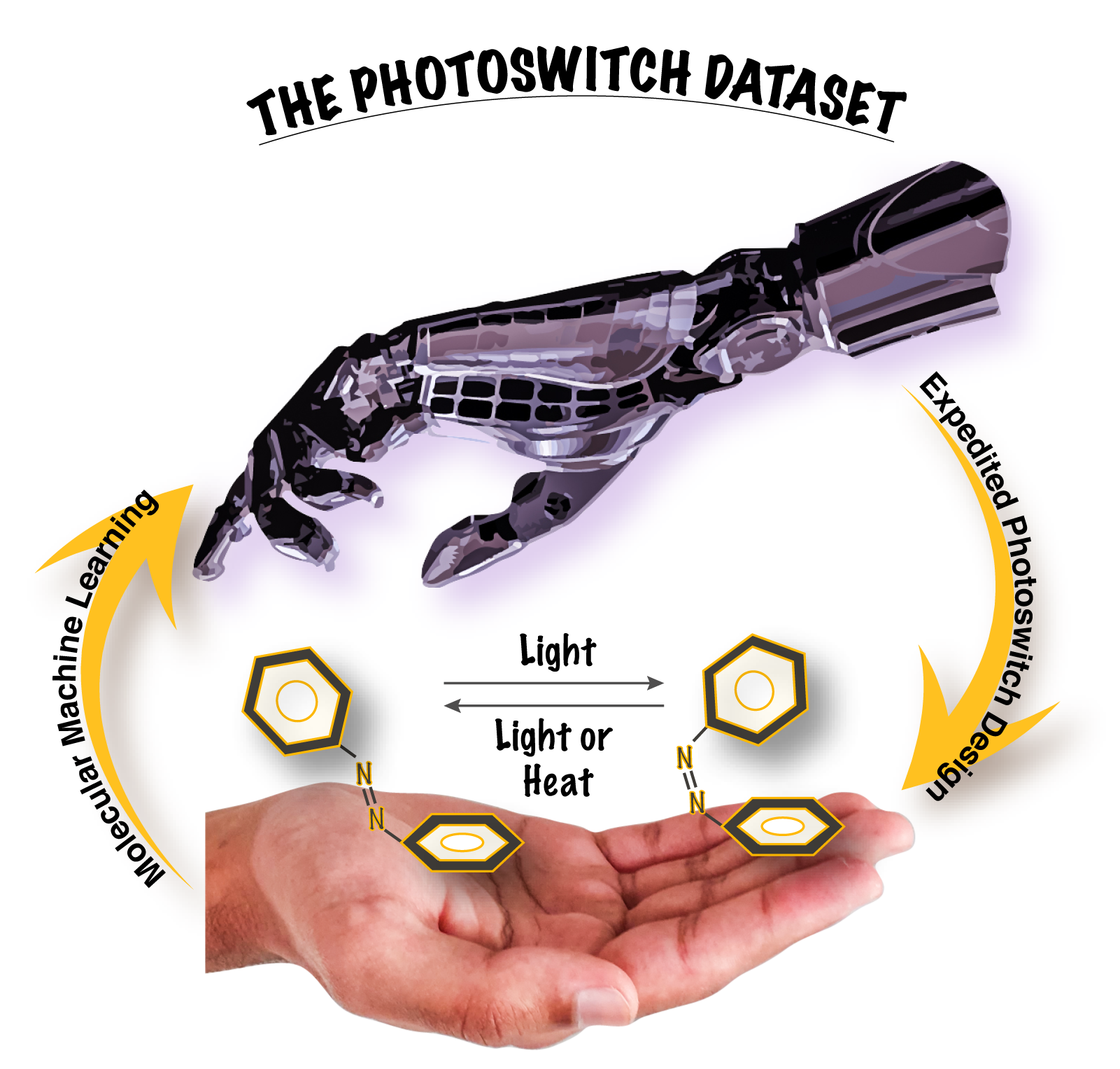Data-Driven Discovery of Molecular Photoswitches with Multioutput Gaussian Processes
Photoswitchable molecules display two or more isomeric forms that may be accessed using light. Separating the electronic absorption bands of these isomers is key to selectively addressing a specific isomer and achieving high photostationary states whilst overall red-shifting the absorption bands serves to limit material damage due to UV-exposure and increases penetration depth in photopharmacological applications. Engineering these properties into a system through synthetic design however, remains a challenge. Here, we present a data-driven discovery pipeline for molecular photoswitches underpinned by dataset curation and multitask learning with Gaussian processes. In the prediction of electronic transition wavelengths, we demonstrate that a multioutput Gaussian process (MOGP) trained using labels from four photoswitch transition wavelengths yields the strongest predictive performance relative to single-task models as well as operationally outperforming time-dependent density functional theory (TD-DFT) in terms of the wall-clock time for prediction. We validate our proposed approach experimentally by screening a library of commercially available photoswitchable molecules. Through this screen, we identified several motifs that displayed separated electronic absorption bands of their isomers, exhibited red-shifted absorptions, and are suited for information transfer and photopharmacological applications. Our curated dataset, code, as well as all models are made available at https://github.com/Ryan-Rhys/The-Photoswitch-Dataset
PDF Abstract

